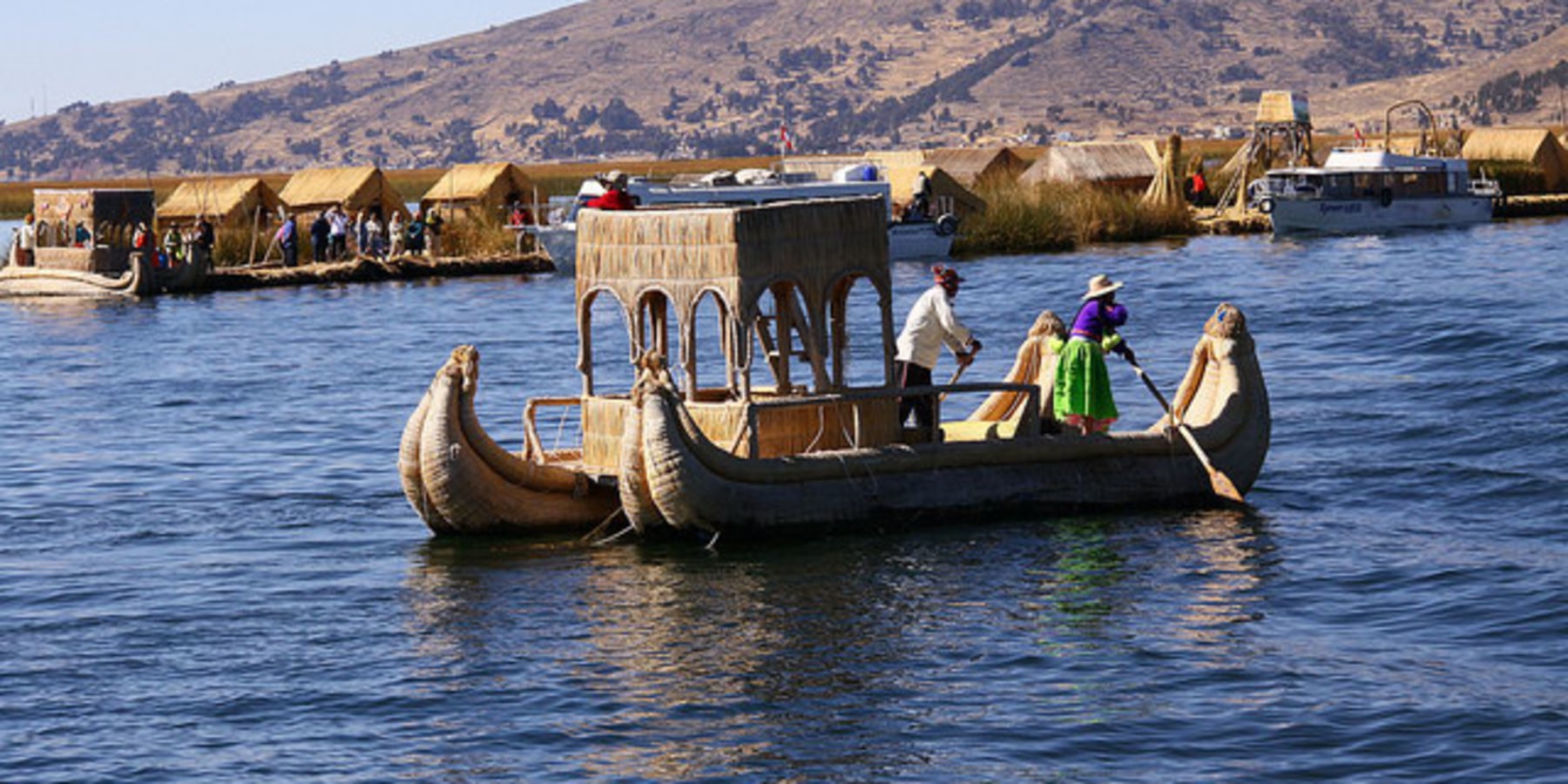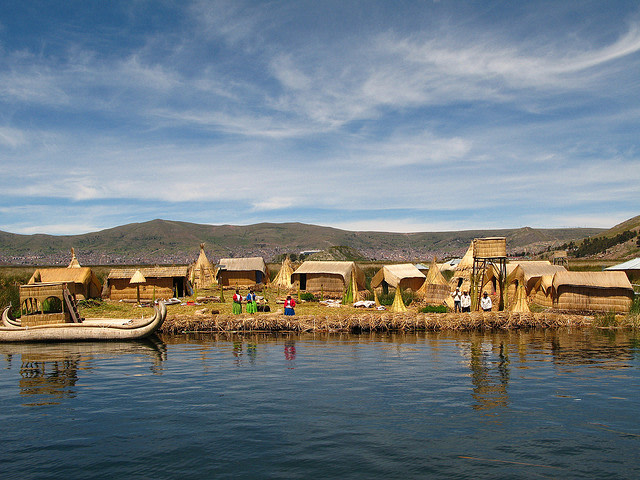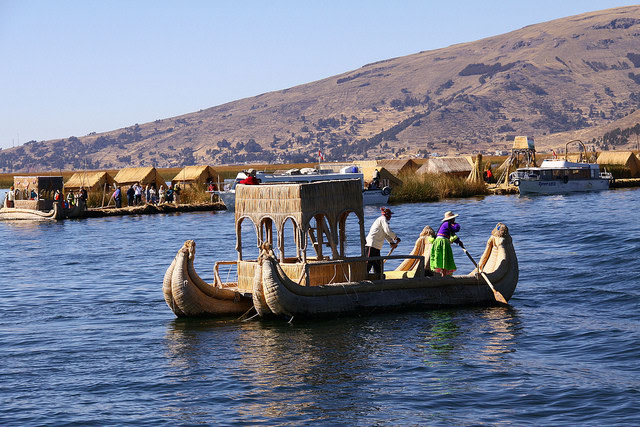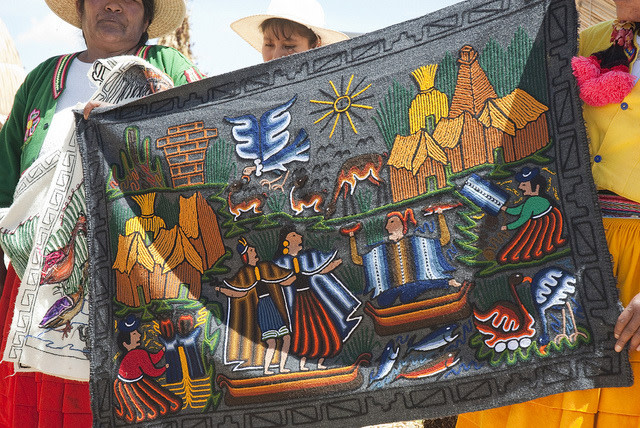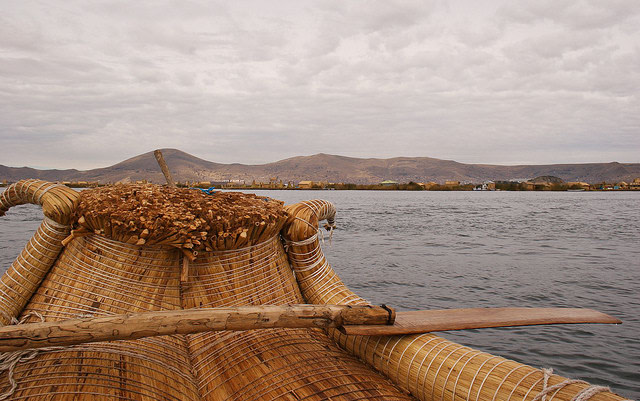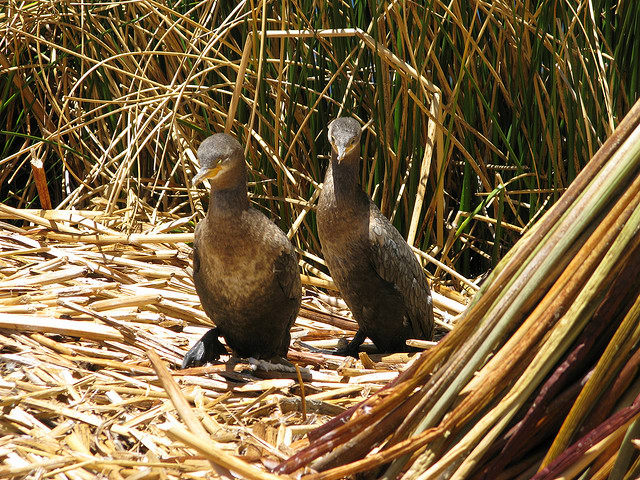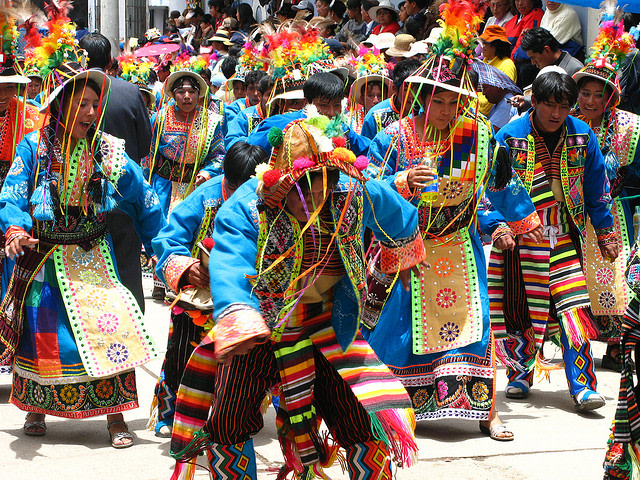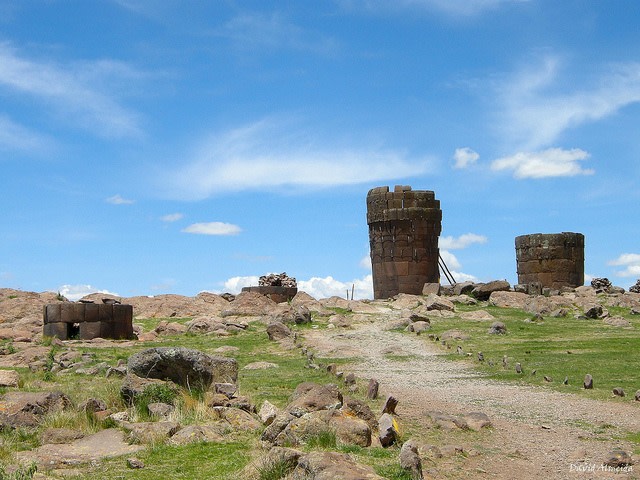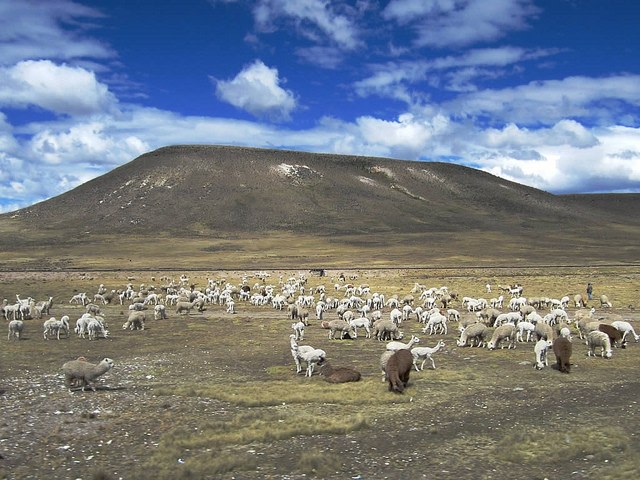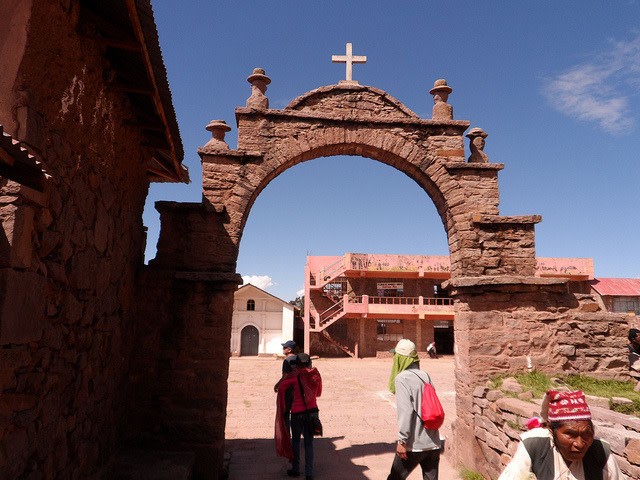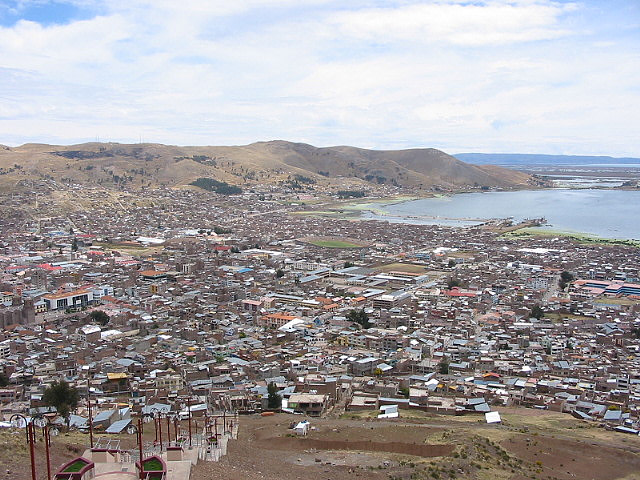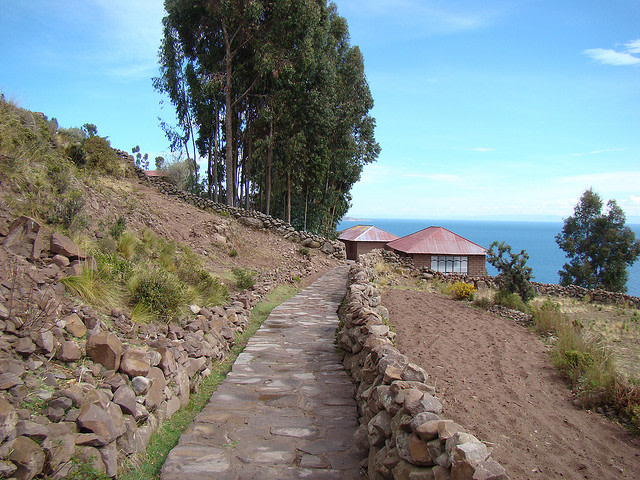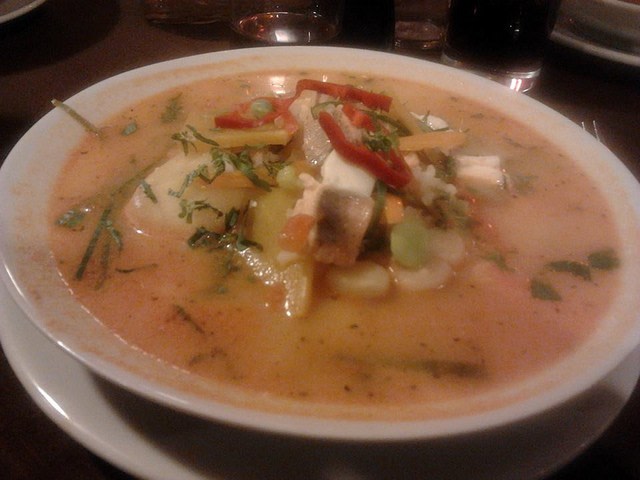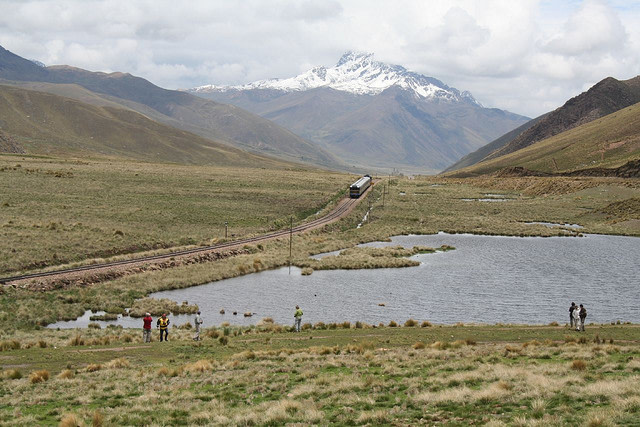| 8 mins read
Julie Jennings
Like the intricate textiles for which it is known, the Peruvian province of Puno weaves a story of ancient tradition and natural beauty to beckon travelers from far away. Located on the western shore of Lake Titicaca and sitting 12,549 feet (3,826 m.) above sea level on the Collazo Plateau in Southern Peru, Puno provides a busy commercial port and communications center for the Southern Andes region. Its nearly 250,000 residents thrive on tourism, agriculture and a healthy export of wool from the region’s llamas and alpacas. Travellers seeking to explore Puno can look forward to an introduction to historic burial sites, the customs of its Aymara and Uros peoples, and the unique structures and boats of this region.
Floating Islands of Lake Titicaca
Visitors to Puno are just minutes away from Lake Titicaca and the Floating Islands, each with its own residents, foods, crafts and personality. The Floating Islands, as they are known, are approximately 41 islands of various sizes made out of the local Totoro reed. The islands, made by and still populated by the Uros people, actually float upon Lake Titicaca. Some people have described walking on the floating islands like walking on a waterbed, although the reed structures are very sturdy. From Puno, the boat ride to the nearest islands is just 30 minutes.
With customs and colorful textiles pre-dating the Incan civilization, the Uros continue to thrive on the floating islands to this day. The number of islands continually changes depending upon the needs of these locals. Many travelers indulge in overnight homestays on the islands to truly appreciate the local history, people and meals, and some of the families who own the islands have managed to create modern conveniences, such as toilets and hot showers, using solar power. A local Puno Tour Guide can help narrow the decision of which islands to visit and on which islands to spend the night as well as explain the customs and experiences of the families on each island, which are close in proximity. While there, visitors can enjoy weaving, fishing, cooking, and viewing traditional Uros clothing.
The locals use inter-island boats, called balsas, which are also made from bundles of dried Totoro reeds woven together by the local people. Like the floating islands, the reeds on the boats must be changed constantly and added to as they begin to weaken and rot.
The Floating Islands are part of the Titicaca National Reserve, which formed in 1978 to protect the highland ecosystem. Near Puno, the reserve protects over 60 species of native birds, four families of fish and 18 native amphibians species.
The Festival of the Virgen de la Candelaria
Every February 2, the people of Puno celebrate the Virgin de la Candelaria, their patron saint. The weeks-long festival honors the patron with dance and music in the streets of Puno. Reaching numbers in the thousands, the people of Puno honor their folkloric city in elaborate dance and music productions, as well as colorful, ornate costumes and masks. The festival begins with preparations in the Catholic Church, and on February 2 moves to Puno’s streets in a grand procession. The festival combines a few hundred of dance groups and musicians. It is one of only a few festivals in South America organized on such a large scale.
More Interesting Places in Puno
Sillustani is considered one of the best-preserved examples of a pre-Incan burial site. It is believed the elite of the Aymara people in the 15th century would build chullpas, large cylindrical tombs, from stone to bury members of their family. Sometimes the bodies would be mummified due to the extremely dry weather conditions. Located on Lake Umayo, Sillustani is only a short drive from Puno.
Isla Suasi is highly rated amongst travelers for the sheer beauty of its surroundings and a slower pace than some of the other islands. A morning exploring the lake by kayak or an afternoon seeking out the alpacas and llamas is a welcome break from the busier islands. Hiking to the island’s highest point for a breathtaking, romantic view of the sunset is a must. After a busy South American journey, a few days to Isla Suasi may be just the thing to unwind.
Another island nearly three hours from Puno by boat is Isla Taquile, which offers striking views of Lake Titicaca and the surrounding Andes. There is a steep hike from and to the boat, but a visit to this island is recommended for the stunning scenery. Guests can enjoy lunching on fresh trout and observing traditional hat- and soap making, as well as textile weaving.
If a challenging hike with a stunning hilltop view is on the list, then a visit to Condor Hill may be a good choice. Also called Mirador de Kuntur Wasi, Condor Hill is over 4,000 m. above sea level, which rewards travelers with a panoramic view of the city and Lake Titicaca. The Condor, specifically the Andean Condor, plays an important role in the region and Peru’s ancient folklore. The vulture-like bird is replicated at the top of the hill. It is possible to take a taxi to the base of the steps of Condor Hill. The combination of altitude and climb makes the journey strenuous;so it is recommended to take water and a snack.
For a night or two on a small island on Lake Titicaca, Amantani Island may be the perfect stop. Tremendous hiking opportunities and scenery are here, while complete immersion into the local customs and foods can be found by staying overnight with one of the resident families.
Dining and Drinking Peruvian-style
Meals in Puno will likely include local dishes, such as "lechon al horno", baked pork with white wine, lemon and red pepper; "chairo” or lamb soup; "chalona", made with dried meat, green lima beans, potatoes, and black "chuño" (dehydrated potato). For snacking, "Huaitia" is a good option. This is a stew made with potatoes and "ocas,” a typical Andean plant, and served with slices of cheese. Trout and fried "suche,” a local fish, are local mainstays, especially on the Floating Islands. And for dessert, try "quesillo," which is a boiled cheese fritter served with honey. Visit the local coffee shops for a rest and some of the local flavors.
Some DO’s in Puno
DO bring cash to avoid credit card surcharges. The local currency is Nuevo Sol.
DO tip at local restaurants, but first check to see if a 10% gratuity has been added to the bill. This is a common practice in many Peruvian restaurants. If not, then tipping 10% is a place to start.
A Few DON’TS in Puno
DON’T forget to bring lots of sun block to this region. The high altitude brings bright sunshine and intense rays, so plan to stay covered up for excursions and hikes.
DON’T forget to bring jackets, long-sleeve tops and hats to protect skin from the sun and keep warm at the high altitude.
DON’T forget to travel smart and safe in any unknown region. A Puno Tour Guide can help with safety tips.
Getting to Puno and Around Town
Travelers fly to Puno using the region’s main airport, Inca Manco Capac International Airport, which is located in nearby Juliaca, the largest city in the Puno region. Puno is accessible by air, rail, water, and automobile.
Weather in Puno, Peru
Puno sits high atop the plains of the Andes Mountains, so temperature changes between day and night can be extreme. May through October, the high altitude means an intense sun factor and dry spells. The year-round average temperatures range from highs in the 60s F to lows in the 30s and 20s F, with October the warmest month. Precipitation increases during the months of November through April, with the most rain in January.
(Julie Jennings enjoys writing about people she’s met, places she’s visited and experiences she’s had. She lives with her two children in Southern California and dreams of taking her next trip.)

